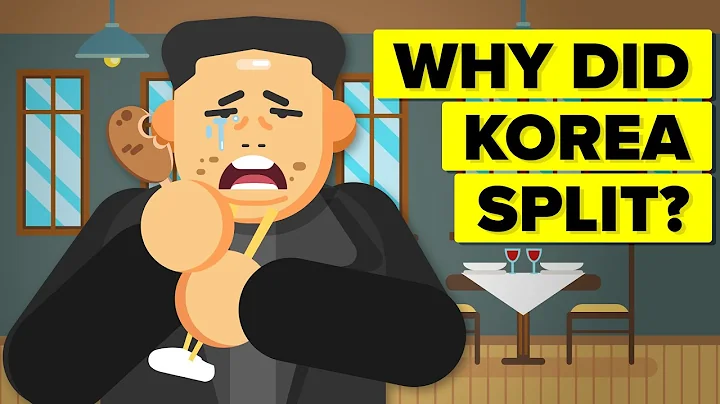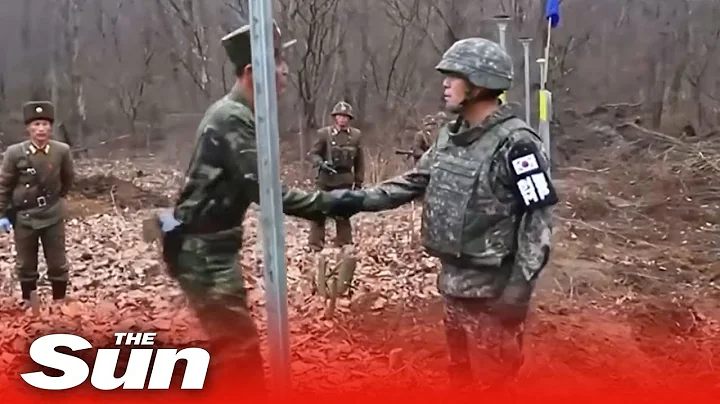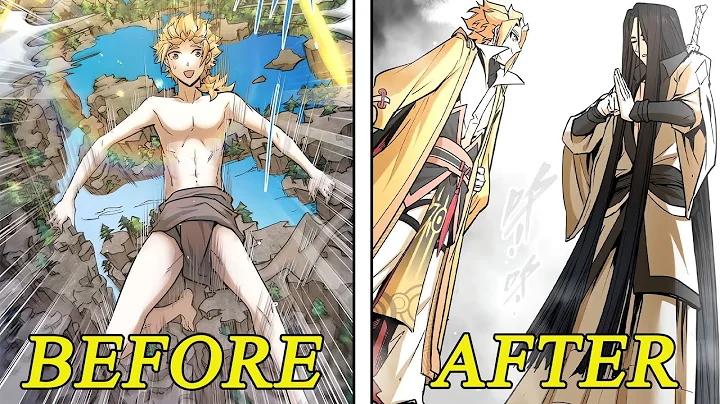"Dingzi Mountain" is located in the Zhishan-dong area 13 kilometers west of Cheolwon in central Korea. It is bounded by Seongsan and Zhishan in the north, and connects the 205 highland and the 190.8 highland in the south. It looks like a "D" character. The volunteers call it "T-shaped mountain", and the US military calls it "T-shaped mountain".
As early as the second half of 1951, when the War to Resist US Aggression and Aid Korea entered the stage of positional confrontation, "Tingshan" became the frontier contact area between the two sides. The U.S. military occupies Highland 190.8, and the volunteers guard Chengshan, Zhishan and Highland 205. The forward positions of the two sides are only a few hundred meters apart.
The 67th Division of the 23rd Army of the newly-entered Korean Volunteer Army is defending here. On January 9, 1953, they took over the defense of the 20th Army and were responsible for the defense of Tingshan.
The 23rd Army is a heroic force with a long history and a glorious revolutionary tradition. After the fifth counter-encirclement and suppression campaign, it won the Battle of Huangqiao, participated in the Menglianggu Battle, Huaihai captured Du Yuming alive, and liberated Shanghai, with outstanding military exploits. , is the main force of , the third field army of .
The "Ting Mountain" position is a forward support point of the central front of the Volunteer Army. Its terrain extends gently to the south. It is a nail wedged into the US defense line. It is regarded as a serious problem by the 31st and 32nd Regiments of the 7th Infantry Division of the US Army in front of them. , severely restricting the activities of the US military.
After the Battle of Shangganling , the US military realized that due to the formation of a solid position defense system centered on tunnel fortifications, the stability of the volunteers' frontal positions had been greatly enhanced.
However, most senior US military generals still believe that as long as the various services and arms coordinate closely and give full play to their equipment advantages, the Volunteer Army's positions are not indestructible.
According to the instructions of United Nations Commander-in-Chief Clark , the 8th U.S. Army and the 5th Air Force decided after consultation that the 7th Infantry Division and the 58th Fighter-Bomber Wing would jointly conduct a coordinated combat exercise to find attacking volunteers. An effective way to fortify a defensive position.
After receiving the order for the exercise, Commander Smith of the 7th Division of the U.S. Army suggested to Army Commander Van Fleet that the exercise be turned into an actual battle involving coordinated actions of the air force, artillery, tanks and infantry.
In this battle, an isolated position of the Volunteer Army was selected to launch a "surprise battle" to seize the Volunteer Army position and capture prisoners in order to check the conditions of the Volunteer Army's tunnel fortifications and accumulate experience for subsequent operations.

The militant Van Fleet immediately agreed to this suggestion and instructed 5th Air Force Commander Backus to instruct the 58th Fighter-Bomber Wing to fully support this operation.
On January 15, 1953, the U.S. 1st Army formally determined its combat plan. The plan stipulates:
(1) will be implemented with the 2nd Battalion of the 31st Regiment of the 7th Infantry Division attached to the 73rd Tank Battalion, and will be implemented with the support of the 58th Fighter-Bomber Wing and the 57th Field Artillery Battalion as well as 7 team-affiliated artillery battalions attack.
(2) The attack target is the "Spud" highland in the "T-shaped mountain" area (the Volunteer Army calls it the unknown highland southeast of highland 205).
(3) The offensive operation is divided into three stages: before the start of the attack, the air force and field artillery will bomb and shell all targets in the "Ting Mountain" area, while the infantry will use exploratory attacks to explore the situation of the volunteer positions; on the day of the attack , first used the air force and artillery to carry out saturation bombing and artillery bombardment, and then used tanks and artillery to cover the infantry to launch the attack. The attack day of
(4) is determined to be January 25th.
Kendall, commander of the 1st Army, named this operation "Operation Split Shot".
In the early morning of January 12, 1953, the 31st Regiment of the 7th Division of the U.S. 8th Army, with the strength of a reinforced company , supported by 4 tanks and dozens of artillery, attacked the 23rd Army's 23rd Army defending Nanshan on Highland 205. The 3rd Platoon of the 1st Company of the 201st Regiment of the 67th Division launched a sudden attack. The 3rd Platoon Commander Le Zhizhou led the entire platoon to face the enemy calmly and bravely. They defeated the enemy's 4 consecutive charges, killed and injured more than 50 US troops, and captured 4 light machine guns. Yes, 7 semi-automatic rifles and 1 pistol.
On January 20, 1953, the U.S. 57th Field Artillery Battalion began shelling the "Ting Mountain" area and gradually increased its firepower. On the 24th, the US Air Force began bombing. At the same time, the US ground forces also carried out two exploratory attacks as planned. By the evening of the 24th, the attack was ready.
The planned attack target of the US military, "Spud" Highlands, is guarded by the 1st Platoon of the 1st Company of the 1st Battalion of the 201st Regiment of the 67th Division (attached to the 4th Platoon of the 2nd Platoon). The deployment of the
1 platoon is: observers and duty firearms are deployed at the front, and the main force of the platoon is located in the tunnel. If the enemy attacks, the 1st, 3rd, and 4th squads will fight on the surface, while the 2nd squad will be on standby in the tunnel as a reserve team.
After the US bombardment began, the head of the 201st Regiment of the Volunteer Army judged that the US military might launch a large-scale attack on the "Tingshan" area and crowd out the 1st Battalion's position, so he ordered the 1st Battalion to prepare for battle.
html On the 24th, the regiment leader assigned the division reconnaissance company belonging to the regiment to be under the command of the 1st Battalion. At the same time, the regiment and battalion commanders all moved forward to take command. Deputy regiment commander Huang Hao went to the 1st Battalion command post, and battalion chief of staff Dai Qizhen went to the 1st company command post. All units of the 1st Battalion made every effort to repair fortifications, reserve ammunition, and study combat plans.In order to show its strength and expand its influence, the "United Nations Army" invited 12 journalists to the battlefield to observe the battle. Before the attack began, they were given an exquisite "combat plan" in three colors. Van Fleet wanted the Western world to Again his military prowess was known.
html At 8 a.m. on the 25th, Commander Kendall of the US 1st Army and Commander Backus of the 5th Air Force, accompanied by Commander Smith of the 7th Infantry Division and others, walked into the viewing area. Cohen, the commander of the 31st Regiment, announced: "Operation Split Shot" "Officially begin.
The U.S. Air Force was the first to dispatch. The 58th Fighter-Bomber Wing sent 5 batches of 88 aircraft to bomb the "T-Mountain" area. It lasted for three hours, dropping nearly 200,000 pounds of bombs and 8 napalm napalm (One of them hit the "Spud" heights).
On November 30, a support artillery group consisting of 126 artillery pieces began to implement a sudden fire attack. Half an hour later, the plane was dispatched again, dropping smoke bombs in the "Ting Mountain" area, and the tanks guided the infantrymen riding armored vehicles toward the offensive position.
After six hours of continuous indiscriminate bombardment by US military aircraft and artillery, the Nanshan Mountains of Highland 205 have been changed beyond recognition. The half-meter-thick layer of hard permafrost was blown into powder by artillery fire, the one-meter-deep volunteer trenches were razed to the ground, and the entire position was enveloped in the sky-high firelight and smoke.
Faced with the menacing U.S. troops, the soldiers did not panic. They quietly waited in the tunnel for the U.S. troops to approach.
At 12:30, Philip, the commander of the 2nd Battalion of the US Army who was responsible for combat command, ordered the infantry to begin the assault. On the right, 7 tanks led a company of infantry to pretend to attack Zhishan; on the left, 6 tanks detoured near the tower hole, using firepower to cut off the connection between "Sbad" highland and other highlands; in the middle, the main attack direction, E company with 20 tanks With the support of tanks, attack the "Sbad" heights.
Although the enemy's offensive was fierce, the soldiers of the 1st Company of the Volunteer Army fought calmly.

They first contacted the regiment command post through walkie-talkie and called for artillery support. Then, our army's artillery shells flew towards the enemy group like raindrops, causing the US military to howl like ghosts.
13:30, the U.S. military artillery fire began to extend into the deep positions of the Volunteer Army, and the assault platoon of Company E quickly advanced to the ridge. In order to successfully capture T-shaped mountain, this platoon conducted nine drills before the battle began. According to those who participated in the battle at that time. The US military said that they could complete the assault mission with their eyes closed, which shows how much Van Fleet attached importance to the Battle of T-Mountain.
In order to cooperate with the commandos in completing their mission, the US military also dispatched two flamethrowing groups to cooperate with the commando operations.
After the US artillery fire extended, the volunteer soldiers jumped out of the tunnel one after another. Chen Zhi, deputy squad leader of the 3rd squad of the 1st platoon, took the lead in leading his combat team into the position. After careful observation, they found that the attacking US troops had advanced to the ridge area. At this time, if Chen Zhi If Zhi and others enter the position later, the position will most likely be lost.
The U.S. Army, which immediately approached the top of the mountain, found that there was no movement in the Volunteer Army position. They thought that the Volunteer Army soldiers had been wiped out by artillery fire, because no one could survive such intensive artillery fire. But when they relaxed, the Volunteer Army soldiers suddenly used The machine gun fired, and in an instant, a large number of American troops fell down.
The soldiers first used the firepower of submachine guns and hand grenades to stop the impact of the US military on the right, and with the fire support of the 3rd platoon on the south high ground, they quickly repelled the first US charge.
Two flamethrowers of the US military breathed fire at the volunteer positions, trying to use flames to prevent the volunteers from throwing grenades. However, one flamethrower was shot to death by our army as soon as he showed his head, while the other flamethrower was shot to death by Flamethrower malfunctioned and escaped unscathed.
Then, with the fire support of the 3rd Platoon, the 1st Platoon repelled the second and third U.S. military charges with grenades. The 1st Platoon leader was seriously injured, and the 3rd Platoon deputy squad leader Chen Zhi stepped forward and ignored The incendiary bomb burned his clothes and he was slightly injured, but he took command with tenacity.
As time went by, the US military became more and more impatient. They once again summoned long-range artillery and launched artillery fire on the southern mountain of Dingshan 205 Highland. The
1 platoon adjusted its deployment in time, withdrew its personnel into the tunnel, leaving only observers on the surface to monitor the enemy, and organized all personnel capable of fighting into groups. At the same time, it is stipulated that when the enemy attacks, only part of the troops will fight on the surface position at a time, and other personnel will be on standby in the tunnel and be responsible for preparing ammunition.
The volunteers who did not flinch at all used grenades and mortars to interrupt the U.S. skirmisher line on the ridge. In the process, they also injured Sergeant Robert Coffey, who was in charge of the U.S. military command.
Seeing that the assault platoon's attack was blocked, Battalion Commander Philip ordered the other two platoons of E Company on standby at the foot of the mountain to join the battle one after another, adopting a wave-like attack method.
As the battle progressed, after the 1st platoon leader was injured, the 1st, 3rd, and 4th squad leaders were also injured successively. Most of the weapons could not be used due to the US bombing. Facing the US troops rushing to the position, acting platoon leader Chen Zhi They decided to launch a counterattack and used the remaining fortifications to engage in hand-to-hand combat with the US military. The soldiers became more and more courageous and repelled the fourth and fifth large-scale US charges.
Company E of the U.S. Army has suffered more than 150 casualties, and Battalion Commander Philip wanted to launch another attack. However, at this time, the commander of the 31st Regiment of the U.S. Army, Cohen, was worried that the Battle of Tingshan Mountain would turn into the second "Battle of Shangganling", so Order all troops to stop attacking and withdraw from the battle.
At 5:30 pm, U.S. artillery and tanks opened fire together and fired smoke grenades to cover the descent of Company E. The volunteers discovered that the US military was retreating and immediately organized firepower pursuit. The US military fled back to the Songcundong position in embarrassment. At this point, the Battle of "Tingshan" came to an end with the disastrous defeat of the US military.
This battle was the largest offensive operation by the US military in the three months since the end of the Battle of Shangganling.
On the 25th alone, the Air Force dropped nearly 230,000 pounds of bombs on "Ting Mountain", artillery and tanks fired more than 168,000 rounds of various shells, and the offensive troops spent more than 50,000 rounds of bullets and more than 650 grenades.
It was a terrible scene to have so many bombs and artillery shells fired into the nearly 30-square-meter Nanshan Mountain of Highland 205. It is said that Dingshan Mountain was lowered by more than ten meters by American artillery fire.
However, with such powerful firepower and overwhelming military strength, Tingshan was not conquered. The 1st Battalion, 1st Company and 1st Platoon of the 201st Regiment of the 23rd Army of the Volunteer Army wiped out more than 150 enemies at the cost of 11 casualties, creating an infantry platoon. A model example of positional defense.
The generals of the "United Nations Army" who were watching the battle remained silent collectively. After witnessing the defeat of the US military, reporters from various countries could not tell lies with their eyes open and could only report truthfully.
Although the wording of media reports in various countries is different, they all have to admit two basic facts about the Battle of Tingshan: First, General Van Fleet’s theory of victory by firepower alone does not work in the face of the flexible counterattack of the Chinese army; Second, the "United Nations Army" has truly lost face.
News reports caused an uproar among the American people. For this reason, the U.S. Congress launched an investigation. The Chief of Staff of the U.S. Army was forced to come to Congress to make a statement.
Shortly after the battle of Tingshan, " People's Daily" quickly published a famous article The article is called "A Loud Slap", which details what happened during the Battle of Tingshan.
After the war, the U.S. Army's war history summarized three reasons for the failure:
First, the air force's bombing range was too large, and there was no intensive bombing of the main target. At the same time, smoke bombs were dropped too early, which affected the shooting accuracy of artillery and tanks;
Second Second, after the bombing and artillery attack, the assault platoon did not launch an attack immediately (due to a radio failure and the order was not received in time), allowing the defenders to prepare for battle;
Third, the attack target was single and the tactics were rigid, allowing the defenders to concentrate force against the assault platoon. Moreover, the fire suppression on the surrounding high ground and depth was insufficient, resulting in the assault platoon being under various fire attacks from the beginning.
The volunteers also summed up four points of victory experience:
First, accurately judge the enemy's situation, make sufficient preparations before the battle, and have sufficient ammunition reserves for the garrison unit;
Second, proper defensive tactics and give full play to the role of tunnel fortifications;
Third, each unit Collaborate closely and actively support each other;
Fourth, the garrison team is brave and tenacious, and the soldiers are proactive.
Not long after, Van Fleet, an originally ambitious US military general, retired "honorably" on the grounds that he had reached the age of 60.















![[1-22] Humanity's last Soldier Returned Back To The Past As A Genius Swordsman l Manhwa Recap - DayDayNews](https://i.ytimg.com/vi/Ak-WLI7yUX4/hq720.jpg?sqp=-oaymwEcCNAFEJQDSFXyq4qpAw4IARUAAIhCGAFwAcABBg==&rs=AOn4CLBDXd2uFyFWDI5SM6IE7_tti9Q7ig)


![[1-14] Humanity's last Soldier Returned Back To The Past As A Genius Swordsman l Manhwa Recap - DayDayNews](https://i.ytimg.com/vi/QAQ5nFDHB28/hq720.jpg?sqp=-oaymwEcCNAFEJQDSFXyq4qpAw4IARUAAIhCGAFwAcABBg==&rs=AOn4CLADAi7-hqO5GF7XS9qyi7JJHhh1Kw)


